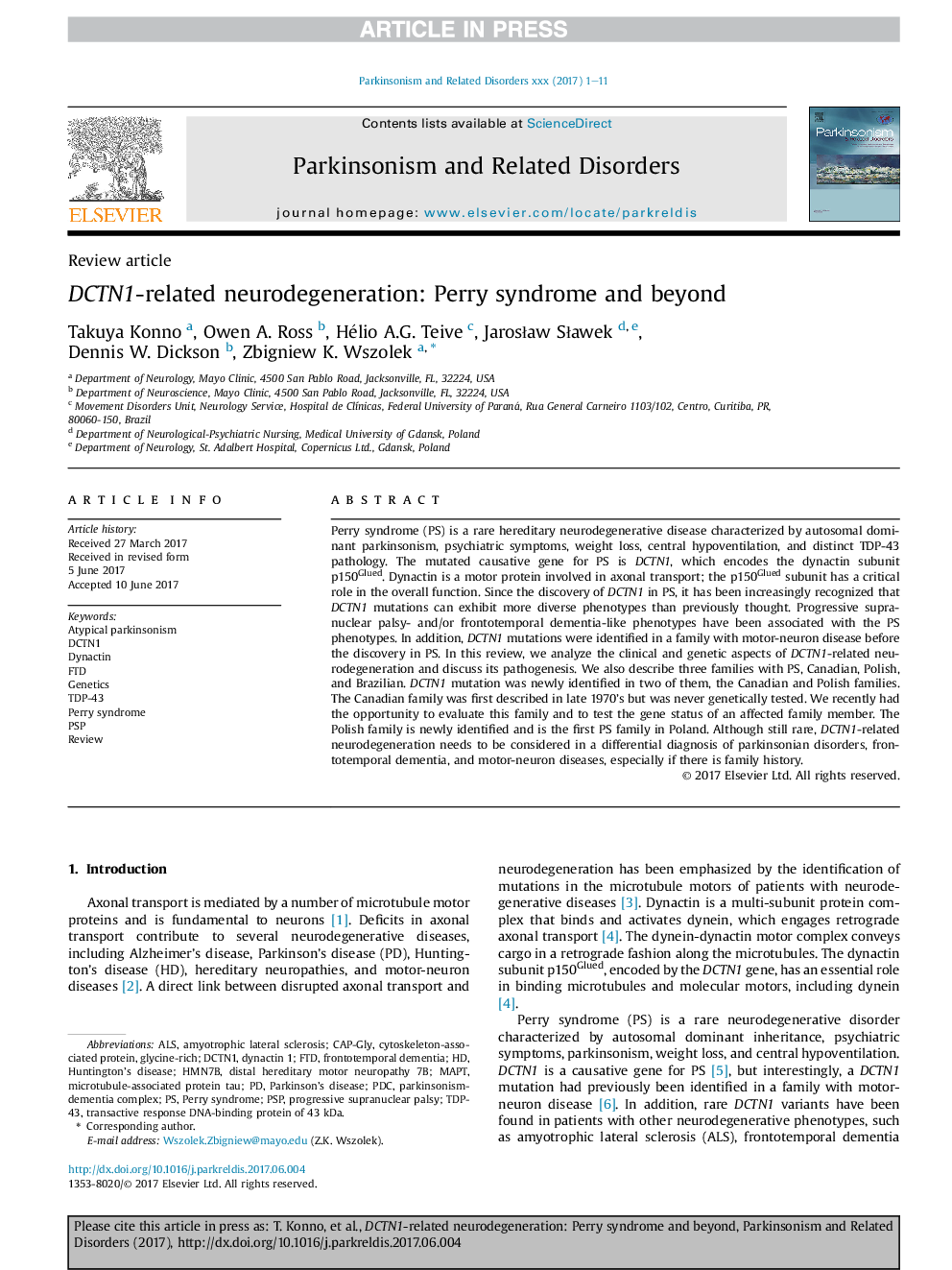| Article ID | Journal | Published Year | Pages | File Type |
|---|---|---|---|---|
| 5503768 | Parkinsonism & Related Disorders | 2017 | 11 Pages |
Abstract
Perry syndrome (PS) is a rare hereditary neurodegenerative disease characterized by autosomal dominant parkinsonism, psychiatric symptoms, weight loss, central hypoventilation, and distinct TDP-43 pathology. The mutated causative gene for PS is DCTN1, which encodes the dynactin subunit p150Glued. Dynactin is a motor protein involved in axonal transport; the p150Glued subunit has a critical role in the overall function. Since the discovery of DCTN1 in PS, it has been increasingly recognized that DCTN1 mutations can exhibit more diverse phenotypes than previously thought. Progressive supranuclear palsy- and/or frontotemporal dementia-like phenotypes have been associated with the PS phenotypes. In addition, DCTN1 mutations were identified in a family with motor-neuron disease before the discovery in PS. In this review, we analyze the clinical and genetic aspects of DCTN1-related neurodegeneration and discuss its pathogenesis. We also describe three families with PS, Canadian, Polish, and Brazilian. DCTN1 mutation was newly identified in two of them, the Canadian and Polish families. The Canadian family was first described in late 1970's but was never genetically tested. We recently had the opportunity to evaluate this family and to test the gene status of an affected family member. The Polish family is newly identified and is the first PS family in Poland. Although still rare, DCTN1-related neurodegeneration needs to be considered in a differential diagnosis of parkinsonian disorders, frontotemporal dementia, and motor-neuron diseases, especially if there is family history.
Keywords
Related Topics
Life Sciences
Biochemistry, Genetics and Molecular Biology
Ageing
Authors
Takuya Konno, Owen A. Ross, Hélio A.G. Teive, JarosÅaw SÅawek, Dennis W. Dickson, Zbigniew K. Wszolek,
